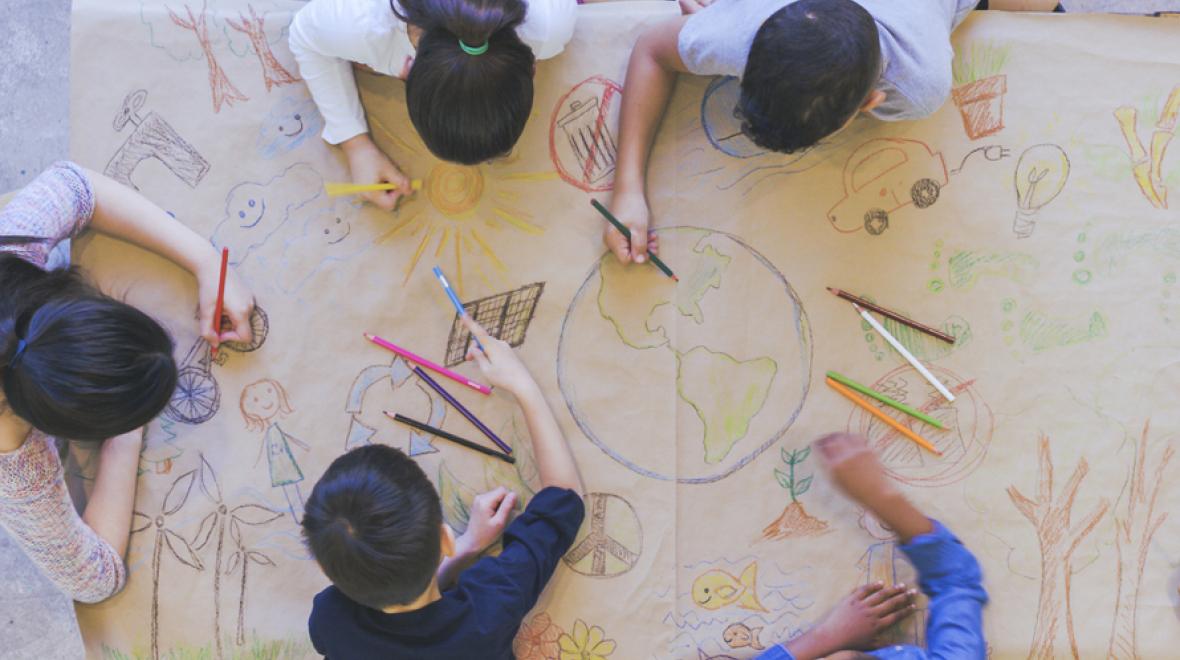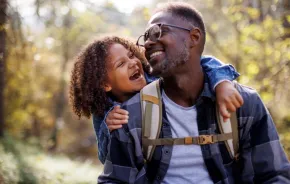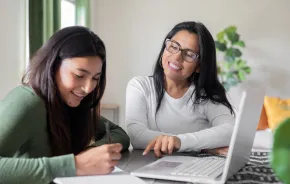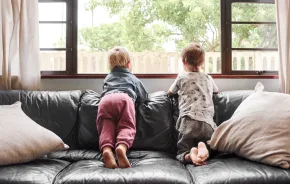
“What if we were to teach our children to see difference with eyes of wonder and curiosity, and not judgment and ridicule?” asks Erin Jones, a local education and systems consultant who teaches global citizenship. Sounds great, but what, you ask, is global citizenship and why does it matter?
Oxfam, an international confederation of NGOs working to alleviate global poverty, defines a global citizen as “someone who is aware of and understands the wider world — and their place in it.” Jones elaborates: “A global citizen is aware of the impact of their choices. Global citizenship education is about helping students learn how we are interconnected and how other places are equally important. It’s not happening in many places in this country. When we teach geography and history, America is [still often] in the center as the conqueror.”
April Rinne, a consultant focused on the new economy, the future of work and global citizenship, writes: “Equally important is to understand what global citizenship is not: It does not mean having a lot of passport stamps, being a globetrotter or a multinational corporation. Global citizenship is about values and mindset.” So, how can we inspire and cultivate global-mindedness in our children?
Seattle Public Schools does offer global citizenship education at its 10 international schools, where programs emphasize five competencies: critical thinking, communication and collaboration, growth mindset, recognizing world perspectives and taking action. While these capabilities are not unique to global citizenship education, they are rarely combined except at an international school. The school district’s vision for international education is to prepare students, in partnership with families and community, for global citizenship in an increasingly interdependent world.
“I find it helpful to think of global citizenship as a lens for education as a whole,” says Thad Williams, international education administrator for Seattle Public Schools. Parents can do a lot to apply that lens to their kids’ learning, no matter what school they attend. And, luckily, there are many ways parents can support this idea of “global education” at home and with kids of all ages.
Bilingualism is good for your brain
Knowing a second language is hugely helpful in developing a global citizen mindset. Aside from providing access to information through conversations, untranslated books and international news sources, “There are a lot of studies connecting brain development to language learning. But also, there is a human connection that can happen through the simple sharing of language,” says Williams.
While gaining fluency in a second language can be very hard, Williams notes, “Cultural competency is also about experiencing the challenge of language learning. [Through the process,] students learn to value other languages.” Knowing the challenge of forming a sentence in another language builds empathy in kids. In fact, any amount of language exposure has value. Jones shares how witnessing a conversation in French changed her daughter’s worldview. “In France, my daughter saw me speaking French to French Africans. In her mind, all French people were white. But more black people in the world speak French than English.”
The perspective-shifting power of travel
“There is a ton of privilege wrapped up in the idea of travel and global citizenship,” says Williams, but he says it is worth looking for ways to make access more equitable.
“There is incredible value in travel. If I could send every kid, I would,” echoes Jones. “Most kids don’t have that opportunity. When it comes down to it, that’s about money.” But Jones points out that not all travel is created equal. If the only locals your kids meet are working for tips, their worldview is not going to expand very much. “Sure, enjoy the resort, but also get out into town and … explore. Approach people with humanity,” she says. Service projects can also help eliminate a consumerist approach to travel.
Jones adds that travel doesn’t have to mean heading to far-flung international destinations, either. Try a restaurant with foods that are different from what you eat at home, attend a library story time in a language different than your own language or visit a cultural festival.
Modeling citizenship
Parents need to model global citizenship. “Be aware of how you respond to difference and be aware of your own implicit biases. We all make mistakes: When you model wrong behavior, also model how to apologize. Don’t underestimate the power of an apology,” says Jones.
Exhibit curiosity and ask your kids questions, whatever age they are. “Raise questions about water usage, food and hunger, and equality,” says Williams. Start close to home and expand from there. “How much water does a shower use?” may lead to questions about overconsumption and how people manage in places with limited access to water.
Encouraging global citizenship in little kids
Normalize diversity by maximizing kids’ exposure to differences. Help them meet people, try new and unusual foods, and play with toys from different cultures. “Be a little more intentional in choosing topics for reading,” suggests Williams. In addition to the classic picture books from your own childhood, find bilingual books and books about people who look and live differently than your family.
“Start with diversity right here — with the people they can see now,” suggests Jones. In the Greater Seattle area there are ethnic community centers and resources, such as the Northwest African American Museum, the Holocaust Center for Humanity or the National Nordic Museum, that help kids understand and celebrate differences. “Create opportunities to learn through activity,” says Jones. Turning a visit to a museum or anyplace new into a scavenger hunt will keep kids engaged, now and as they get older.
Expanding cultural competency in school-age kids
“Get your news from international sources,” says Jones. You will learn more about events outside the United States and gain a different perspective on events happening in the U.S. Talk to your kids about the news. When they’re old enough, teach them how to read a newspaper and question things they see and read online. Introduce them to the UNESCO or Global Education First Initiative YouTube channels.
Williams says he bought his daughter a globe. “It’s amazing the amount of questions and curiosity a globe can generate.” Subscription boxes such as Little Global Citizens can also encourage curiosity about other countries and their cultures.
Programs and technologies that connect kids around the world promote mutual understanding and global citizenship. “Use technology, like video chat or virtual exchanges, to connect kids to ‘away,’” says Jones. Virtual exchanges are not a replacement for travel, but they provide equitable opportunities for students to connect with kids around the world, benefiting kids on both sides of the router. And what’s old is new again: Nowadays, there are websites that connect kids with email “pen pals.”
Global connections and experiences for teens
Teens are old enough to begin taking action. Help yours see how issues they care about are globally connected and encourage them to get involved. If your teen is more interested in pop culture than social consciousness, use that. For instance, K-pop (Korean pop) can be a starting point for important discussions about consumerism, image consciousness and even suicide. Or talk about representation and stereotyping in video games.
Even if you don’t think you can afford it, explore available exchange programs. Scholarships and fundraising programs can make international travel accessible. Consider hosting an exchange student yourselves. And remember, there are many local service-learning opportunities to explore.
Global Citizenship Education Resources
|











